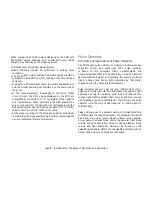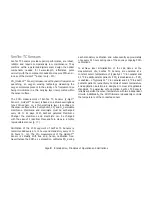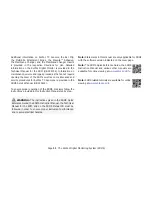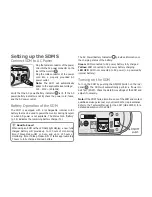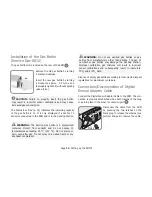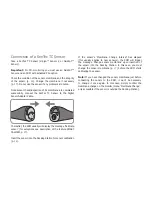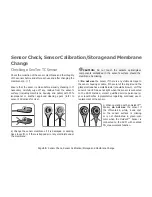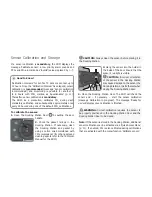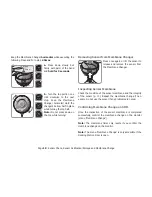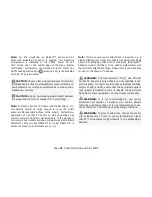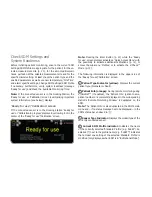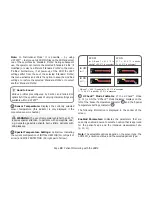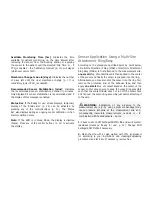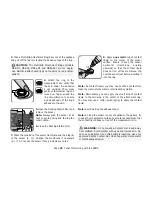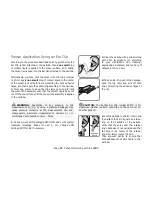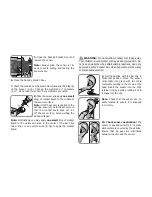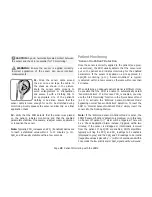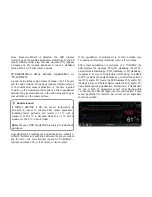
Page 21
.
Patient Monitoring with the SDMS
Note: For PO
2
monitoring, an OxiVenT™ Sensor and an
SDM with activated PO
2
-option is needed. The respective
configuration is indicated on the SDM’s ‘Power On Self
Test’ Screen and on the second page of the menu ‘System
Information’. Furthermore, the colored dot in the center of a
SDM’s Docking Station Door
7
is orange if PO
2
is not activated
and blue if PO
2
is activated.
CAUTION: Choose a flat, well-perfused area of intact skin
(centrally located sites are preferable) for sensor attachment.
Avoid placement over large superficial veins or areas of skin
breakdown or edema.
CAUTION: A good, hermetically sealed contact between
the sensor and the skin is essential for TC monitoring!
Note: To attach a SenTec TC Sensor with the Ear Clip (p.
27
),
the earlobe should be large enough to cover the entire
sensor membrane (dark surface of the sensor). Furthermore,
application of a SenTec TC Sensor on pierced earlobes may
result in incorrect PCO
2
/PO
2
measurements. If the earlobe is
too small or has multiple piercings, consider using a Multi-Site
Attachment Ring (model MAR/e-MI or model MAR/e-SF) to
attach the sensor to an alternate site (p.
24
).
Note: If more secure sensor attachment is required, e.g. in
high humidity environments, for patients who perspire profusely
and/or in challenging patient motion conditions, the Staysite™
Adhesive (model SA-MAR) can be used complementary with
the Multi-Site Attachment Rings. Please refer to the Directions
for Use for the Staysite™ Adhesive.
WARNING: The measurement of SpO
2
and PR with
SenTec TC Sensors is only defined on sites specified in the
pictures above. In order to avoid erroneous readings and false
alarms of SpO
2
and PR, ensure that the appropriate patient
type (Adult) is selected. Ensure to disable the parameters
SpO
2
/PR for sensor application on other measurement sites.
WARNING: It is not recommended to use sensor
attachment accessories on patients who exhibit allergic
reactions to adhesive tapes. It is not recommended to use
the Contact Gel on patients who exhibit allergic reactions.
WARNING: To prevent skin burns, change the sensor
site at least every 4 hours for sensor temperatures higher
than 43 °C on neonates or higher than 44 °C on adult/pediatric
patients.

